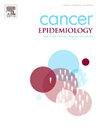放疗后黑色素瘤幸存者的第二原发癌风险:一项基于人群的队列研究
IF 2.3
3区 医学
Q3 ONCOLOGY
引用次数: 0
摘要
皮肤黑色素瘤的发病率正在全球范围内上升,由于早期发现和治疗的进步,生存率显著提高。因此,黑色素瘤幸存者的长期健康得到了越来越多的临床关注。一个新出现的问题是第二原发癌(SPCs)的发展,这可能是由共同的危险因素、遗传易感性或癌症治疗(包括放疗)的后期效应造成的。虽然放疗在黑色素瘤治疗中有选择性地使用,特别是对于区域淋巴结或转移中的转移,但其诱导长潜伏期恶性肿瘤的潜力在这一人群中仍未得到充分探索。方法:我们对2010年至2024年间在澳大利亚昆士兰州三级中心诊断为原发性皮肤黑色素瘤的19640名成年人进行了回顾性队列研究。排除既往有恶性肿瘤或随访不完全的患者。只有那些在治疗后存活至少一年的患者被纳入研究,以尽量减少将转移性肿瘤误诊为SPCs。标准化发病率(SIRs)使用国家癌症发病率数据计算。使用有向无环图(DAG)引导的Cox回归模型来估计风险比(hr),调整年龄、诊断年份、手术、化疗和免疫治疗。计算每10,000人年的超额绝对风险(ear)。结果9182例接受放疗,10458例未接受放疗。SPCs发生在8.3 %的放疗患者和5.1 %的未放疗患者。放疗与SPC风险升高相关(HR 1.13; 95 % CI, 1.02-1.25)。第二原发性黑色素瘤(HR 3.45; 95 % CI, 2.89-4.12)、软组织肉瘤(HR 2.87; 95 % CI, 1.10-6.34)、血液恶性肿瘤(HR 1.42; 95 % CI, 1.08-1.88)和肺癌(HR 1.32; 95 % CI, 1.05-1.67)的相对风险最高。风险分层显示45-70岁男性负担最重。在10 - 14年的潜伏期窗口中,EAR的峰值为每10,000人年5.1例。放疗占所有SPCs的15.4% %和辐射相关癌症的18.1% %。放疗与黑色素瘤幸存者长期SPC风险的适度但有统计学意义的增加相关,特别是对放射敏感的癌症。这些发现支持需要长期的、适应风险的监测策略,特别是在接受放射治疗的中年男性中。未来的研究应整合临床、遗传和剂量学数据,以更好地为个性化的生存护理提供信息。本文章由计算机程序翻译,如有差异,请以英文原文为准。
Risk of second primary cancers among melanoma survivors following radiotherapy: A population-based cohort study
Background
Cutaneous melanoma incidence is rising globally, and survival rates have improved significantly due to advances in early detection and treatment. As a result, the long-term health of melanoma survivors is gaining increasing clinical attention. One emerging concern is the development of second primary cancers (SPCs), which may result from shared risk factors, genetic susceptibility, or late effects of cancer treatment, including radiotherapy. While radiotherapy is used selectively in melanoma management, particularly for regional nodal or in-transit metastases, its potential to induce long-latency malignancies remains underexplored in this population.
Methods
We conducted a retrospective cohort study of 19,640 adults diagnosed with primary cutaneous melanoma between 2010 and 2024 at a tertiary centre in Queensland, Australia. Patients with prior malignancies or incomplete follow-up were excluded. Only those who survived at least one-year post-treatment were included to minimise misclassification of metastases as SPCs. Standardised incidence ratios (SIRs) were calculated using national cancer incidence data. Directed acyclic graph (DAG)-guided Cox regression models were used to estimate hazard ratios (HRs), adjusting for age, year of diagnosis, surgery, chemotherapy, and immunotherapy. Excess absolute risks (EARs) were calculated per 10,000 person-years.
Results
Of the cohort, 9182 received radiotherapy and 10,458 did not. SPCs occurred in 8.3 % of irradiated patients and 5.1 % of non-irradiated patients. Radiotherapy was associated with elevated SPC risk (HR 1.13; 95 % CI, 1.02–1.25). The highest relative risks were observed for second primary melanoma (HR 3.45; 95 % CI, 2.89–4.12), soft tissue sarcoma (HR 2.87; 95 % CI, 1.10–6.34), hematologic malignancies (HR 1.42; 95 % CI, 1.08–1.88), and lung cancer (HR 1.32; 95 % CI, 1.05–1.67). Risk stratification revealed the greatest burden among males aged 45–70. EAR peaked at 5.1 per 10,000 person-years in the 10–14-year latency window. Radiotherapy accounted for 15.4 % of all SPCs and 18.1 % of radiation-associated cancers.
Conclusions
Radiotherapy was associated with a modest but statistically significant increase in long-term SPC risk in melanoma survivors, particularly for radiosensitive cancers. These findings support the need for long-term, risk-adapted surveillance strategies, especially among middle-aged males receiving radiotherapy. Future studies should integrate clinical, genetic, and dosimetric data to better inform individualised survivorship care.
求助全文
通过发布文献求助,成功后即可免费获取论文全文。
去求助
来源期刊

Cancer Epidemiology
医学-肿瘤学
CiteScore
4.50
自引率
3.80%
发文量
200
审稿时长
39 days
期刊介绍:
Cancer Epidemiology is dedicated to increasing understanding about cancer causes, prevention and control. The scope of the journal embraces all aspects of cancer epidemiology including:
• Descriptive epidemiology
• Studies of risk factors for disease initiation, development and prognosis
• Screening and early detection
• Prevention and control
• Methodological issues
The journal publishes original research articles (full length and short reports), systematic reviews and meta-analyses, editorials, commentaries and letters to the editor commenting on previously published research.
 求助内容:
求助内容: 应助结果提醒方式:
应助结果提醒方式:


